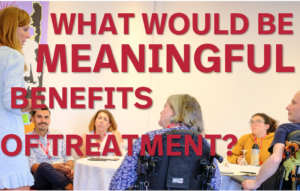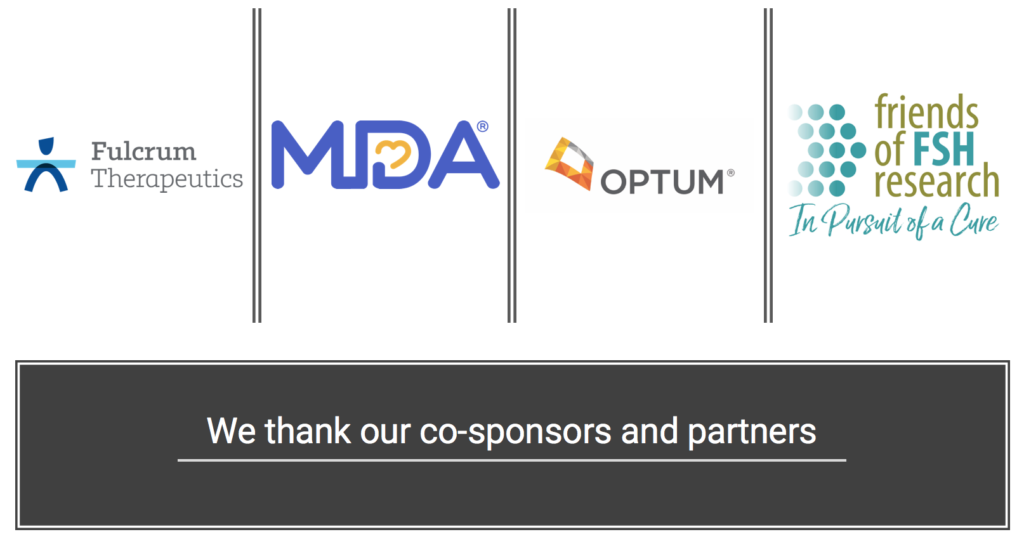 The current COVID-19 crisis has forced us to postpone the Voice of the Patient Forum. We will be rescheduling it for the earliest feasible date. In the meantime, we hope you and your family stay healthy through this difficult time. We have set up our “Sequester Camp” page with activities and resources to help our community stay connected and safe. Join us on Thursday, March 26, at 1:00 PM ET, for our next live FSHD Society Sequester Camp webinar on “Ways to Connect. Ways to Help.”
The current COVID-19 crisis has forced us to postpone the Voice of the Patient Forum. We will be rescheduling it for the earliest feasible date. In the meantime, we hope you and your family stay healthy through this difficult time. We have set up our “Sequester Camp” page with activities and resources to help our community stay connected and safe. Join us on Thursday, March 26, at 1:00 PM ET, for our next live FSHD Society Sequester Camp webinar on “Ways to Connect. Ways to Help.”
Please know that we will not let this emergency slow us down in our work to get treatments and a cure for FSHD to our families. In our final survey of this series, we would like to know what you hope for from a future treatment. A complete cure and restoration of all lost muscles would be ideal, but short of this ultimate goal, are there treatment outcomes that would still be meaningful to you?
The Voice of the Patient Forum is our community’s opportunity to testify to the FDA on the impact FSHD has on your life and the lives of your loved ones. Your testimony will result in a Voice of the Patient Report that will be submitted to the FDA for inclusion in the framework used to evaluate future FSHD therapies. Your views carry great weight with the agency when it considers whether to approve a new therapy. We encourage everyone—patients and family members, at every stage of disease progression—to get involved.
We appreciate greatly the information you have been sharing to help us prepare for this landmark meeting. In the most recent survey, you told us about how you are managing your condition now. Not unexpectedly, a majority cited muscle weakness and dysfunction, closely followed by pain and fatigue, as the main focus of current interventions. Surprisingly, few mentioned eye discomfort and pain, even though the inability to close the eyes fully is a prevalent symptom. A large number of respondents said they were not doing anything to alleviate symptoms because they had heard there is no treatment.
Exercise was the most-mentioned approach that people are using to maintain strength and function. To manage pain, people relied on physical therapy and massage as much or more than on prescription and non-prescription drugs. Unfortunately, high costs, along with the time and energy needed to get to appointments, keep many people from accessing these treatments. Current approaches offer only temporary relief, making it difficult for individuals to stay motivated. There is clearly an urgent need for more evidence-based guidance on what works and what doesn’t, and ultimately for treatments that can slow or stop the progression of symptoms.
If you haven’t taken our past surveys, you can do so by visiting the Voice of the Patient Forum page.




I clearly forgot to include eye discomfort and pain when I took the recent survey. It is an ongoing situation 50% of the time. I wonder if like myself, many forgot to include it because it is such a normal part of our lives.